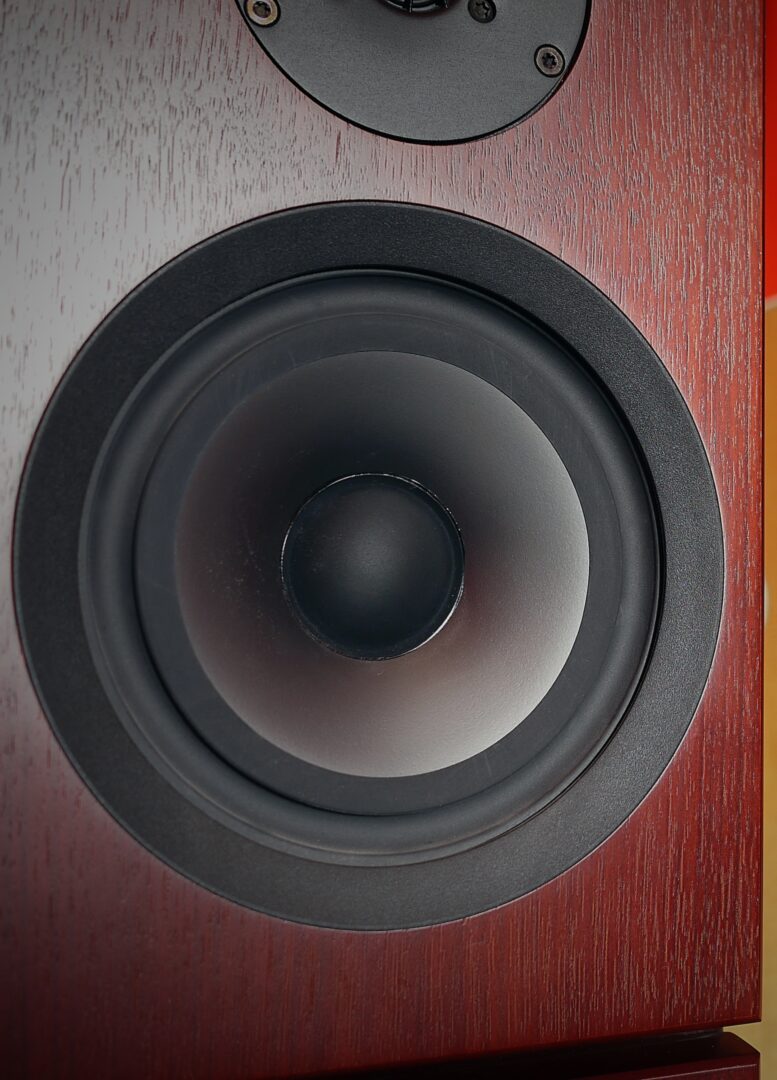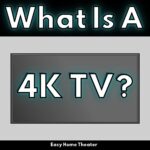Is IMAX Enhanced Worth It?
Is IMAX Enhanced Worth It?

I know I’ve probably made mention of this before, but the one thing that truly makes home theater special is just how fast it progresses.
I mean think about it, it was just a few short years ago where we were talking about how far off the idea of 4K seemed, and now look at it; it’s practically everywhere!
Now we’re already seeing the release of things like HDR, Micro Led, and hey, even 8K!
It’s absolutely mindblowing to think about. And as per tradition, there’s now a new technology that’s promising just as much innovation called IMAX Enhanced.
But what exactly is this new technology, how do you get it, and most importantly, is IMAX Enhanced actually worth it?
Let’s find out.
What is IMAX Enhanced?
Why was IMAX Enhanced Created?
What Are The Actual Benefits That IMAX Enhanced Offers?
What Makes Something IMAX Enhanced?
How Do you Get IMAX Enhanced Content?
Okay So What Streaming Services Currently Support It?
What Content Is Currently Available For IMAX Enhanced?
Is It Available Everywhere?
Can Any TV Play IMAX Enhanced Content?
Are Special Speakers Required For IMAX Enhanced?
What Home Theater Receivers Currently Support It?
How Many Companies Are On Board With IMAX Enhanced As Of Right Now?
Is IMAX Enhanced Or Dolby Vision Better?
What Future Content Is Planned For IMAX Enhanced?
Is IMAX Enhanced Worth The Upgrade?
Final Thoughts
What is IMAX Enhanced?

So what exactly is it?
Well to put it simply, IMAX Enhanced is a relatively new audio/video certification & licensing program, jointly developed by the audio company DTS and the IMAX brand itself — that promises substantial increases in both visual clarity and sound quality for the content and products that support it.
Its main goal is to essentially provide you with that authentic IMAX experience in the comfort of your own home. This is through means of both IMAX’s renowned picture quality, and their signature grandiose sound.
So whenever you see something that says that it’s IMAX enhanced; be it a receiver, new TV, or whatever the case, that basically means that it fully supports this new beneficial technology.
Why Was IMAX Enhanced Created?

But you might be wondering, well if display and sound technology was already so good with the likes of 4K and DTS:X being a thing, why the need for a new one?
The answer to that is honestly pretty multifaceted, so lets start with the visual side of things first.
As you’re probably already aware, IMAX is one of the leading brands when it comes to the theater experience, no questions about it.
If you’ve ever had the chance to go to one, you’ll notice how much of a step up the entire experience actually is; not just in sound quality, but in terms of the actual fidelity of the picture as well.
That has to do with the fact that their content is shot using a specialized 15/70 mm film that’s approximately 10 times bigger than the average 35 mm film used in traditional movie theaters. How Imax Works
This is then further helped along by their proprietary DMR (Digital Media Remastering) technology that utilizes special algorithms to clean up the image even more, resulting in the incredible picture that we ultimately end up seeing.
However the problem, and partially the reason why this enhanced format was even invented in the first place, actually has to do with 4K and HDR.
In post production, when AV engineers are tasked with formatting the content from a movie theater to our home screens come time for a general release, often times there can be small imperfections or blemishes in the resulting content due to constraints in consumer display technology.
This then necessitates the need for compromises to be made in order for it to actually be viewable in a home setting. These compromises can be anything ranging from film grain to the cropping of large portions of the image.
Little fun fact, this is actually the reason that some movies have those black bars at the top and bottom. They’re called letterboxes, and come as a result of movie makers filming in a much higher aspect ratio, usually 1.85:1 to 2.39:1, and having to format for smaller screens which typically have an aspect ratio of 16:9 or 4:3.
But until now, these imperfections were never really noticed because the resolution that consumers viewed the content in made them nearly invisible to the naked eye.
But because of the sheer clarity offered by 4K and now even 8K, every little flaw and defect of the filmmaking process has also been made visible as a result. This coupled with the fact that current HDR can look far different than what the filmmaker intended, due to differences in mixing, meant that something had to change if we were to get the purest and most consistent image quality.
However things didn’t just stop there.
Over on the sound side of things, improvements existed there that could also be made — and after careful consideration, IMAX and DTS decided to partner in order to create a platform that would instantly let consumers know that what they were getting was the best of the best simply by stating that that particular piece of equipment or content was IMAX Enhanced.

DTS is the other player in that dynamic duo that certainly helped to make these improvements possible; in large part due to their decades of experience. By utilizing DTS’S proprietary DTS:X codec, IMAX was able to refine this tech even further.
For every single movie that’s released in one of their theaters, IMAX actually works closely with the filmmakers to create their very own mix for their lauded point source surround sound (which is basically another way of saying it’s extremely accurate in recreating the precise directions sounds come from without a lot of the reflecting or reverberations that typically occur)
But since the typical home theater isn’t nearly as specialized as one of these theaters, these near-field (meaning condensed) sound mixes that were released for the same movies ended up leaving a lot to be desired.
Acknowledging this, DTS and IMAX worked in collaboration to create a sound mix that was specifically designed for use in a home setting that wouldn’t lose that same dynamism present in theaters. Their goal was to create a format that could get as close to this experience as possible without having to nerf anything on either the audio or visual side.
This unprecedented effort to combine both impeccable sound, with an exceptional picture quality, resulted in something truly special – and on September 4th 2018, after meticulous research and development, it was officially announced.
So in short, it was created because of the existing inadequacies in current display & sound technologies, and as a way for consumers to quickly tell what content and hardware is top of the line from a distinct certification on the packaging and/or product
What Are The Actual Benefits That IMAX Enhanced Offers?
So what are the exact tangible benefits that you can expect from IMAX Enhanced content over the stuff that’s already available?
Well what you get is…
A Much Cleaner Looking Image Quality & Improved 4K
As I mentioned earlier, the current problem with 4K in particular is that its clarity advantage can be somewhat of a give and take; in that it can potentially augment any of the imperfections that might exist in a film.
If there’s even an iota of visual errors present anywhere on the screen, there’s a good chance that they’ll show — mainly because there’s a lot more pixels now overall.
What’s really cool about this enhanced format is that it utilizes IMAX’S Digital Media Remastering (DMR) technique to remove any additional film grain or noise that tends to distort the image; meaning what you get is a much cleaner looking visual presentation that’s leagues better than what was possible before.
So really in layman’s terms, what you’ll immediately notice is that image has a lot more clarity and pops a lot more.
A More Accurate & Vibrant HDR Presentation

Another huge benefit that you’ll immediately notice is a much better HDR presentation.
High dynamic range is something that manufacturers thus far have struggled to agree on; which is really easy to see when you consider the fact that there’s multiple different versions of the same principal concept (Dolby Vision, HDR 10, HDR 10+, etc.)
HDR basically allows for you to see all the details in both bright and dark content at the same time, similar to how the human eye would actually see the image. This results in a much improved picture over the commonly used standard dynamic range.
When done right it can be absolutely mindblowing, but with so many different ways to implement it, that experience can change dramatically from each piece of content.
This coupled with the fact that different mixing processes can end up entirely changing the intended vision of the director means that even if what you’re seeing is HDR, it might not even be accurate to what the filmmaker originally wanted you to see.
IMAX Enhanced ends that issue.
Not only do you get a much brighter and vibrant HDR, but you actually get to see things exactly the way that the filmmaker intended.
Increased Sound Quality

It’s not just a visual boost that you’re getting with this, but an increase in sound clarity as well.
By further improving upon the already impressive DTS:X, they’ve managed create a custom and entirely new sound mix that’s able to provide the exact IMAX experience you’d get in a theater, all in the comfort of your own living room.
That means increases in clarity, soundstage, directionality, and immersion across the board.
Deeper & More Impactful Bass

If you’re like me and you love a good bass, then you can rejoice as a much deeper and more impactful bass is offered here as well.
It’s not just a mere increase in the volume of the bass though, but an actual tangible increase in low end fidelity — allowing movies to sound even more impressive as the action unfolds on screen.
It’ll be the kind of bass you feel and not just hear.
A Much Bigger Aspect Ratio
Interestingly enough, even the way that the picture is actually presented receives a dramatic increase.
Remember earlier, when I talked about movies being shot in a 1.85:1 to 2.39:1 aspect ratio and being cropped from there to fit our televisions at home?
Well that’s a thing of the past with the Enhanced format.
Instead, when the content is shot using specialized IMAX cameras and utilize this new technology, the same 1.89:1 aspect ratio that IMAX theaters use is shown.
That means no more cropping out of details, and most importantly, no compromises!
So not only is the quality of the picture better, but you actually get to see more of that picture, with additional details that might have otherwise been lost offscreen.
Oh yeah, and that also means no more letterboxes (the black bars on the top and bottom of the screen) so there’s that too.
What Makes Something IMAX Enhanced?

I kind of touched on this in the previous section, but in order for a device or piece of content to officially support this new format, it has to meet a strict set of guidelines set forth by not only DTS & IMAX, but the filmmakers themselves.
More specifically, they’re required to meet a certain criteria of the highest standard in a number of different categories including brightness, resolution, contrast, color accuracy, sound quality, and the viewing mode.
Only then does it gain the distinction of becoming officially certified.
How Do You Get IMAX Enhanced Content?
So that sounds good and all, but how can you actually get it?
Well considering it’s such a new standard, the answer to that question kind of changes pretty often.
But as of right now, there are a few number devices, as well as streaming services and movies that currently support it that’ll let you enjoy all of the benefits of this new format.
So to answer the question, you get it by having the certified hardware (the TV & the receiver) along with the content that’s actually Enhanced.
Okay, So What Streaming Services Currently Support It?
As of right now there’s really only a few that support it currently, but this is almost certain to change; especially as time goes on.
As of September 2019 in the United States, FandangoNow had begun streaming its content with the new format in mind. This was followed by Rakuten TV announcing its support in the European markets, Tencent Video offering content in China, and Tsutaya making it available in Japan as of November 1st of 2019.
So for now, those are really the major 4 that offer it — but keep an eye out since the list of those on board will likely continue to grow.
What Content Is Currently Available For IMAX Enhanced?

But what about the actual content, what can you watch as of right now?
The list of available content is definitely growing, but as of right now and just to name a few — Angry Birds 2, Terminator Dark Fate, Spider Man Far From Home, and Jumanji: Welcome To The Jungle are among the list of included titles.
The very first movies that came out for it were the documentaries Journey To The South Pacific and A Beautiful Planet, released in December of 2018.
From there more would be released as time went on.
In fact, on May 4th, 2020, IMAX, in conjunction with DTS & Sony Pictures Entertainment, announced that over the next two years, hundreds of new titles would be released under this new format with at least 100 coming in those next 12 months from that point.
Evidence of this format gaining in popularity came when in late 2021, Marvel Studios announced that 13 of their movies would be getting an Imax Enhanced version complete with the improved aspect ratio you’d expect from the format which was awesome.
In January 4th, 2023, IMAX announced that they would be adding their specific sound to the streaming service Disney+ for Marvel movies and their other content.
Based on that alone, it can definitely be said that this is a format that’s certainly growing in mindshare and interest.
It’s expected that amount of supported content will increase as additional TVs and devices become available so that’s something to keep in mind.
Hopefully this comes to fruition because if so, that would be a significant development and would solidify commitment to expansion of the platform — potentially attracting others to get on board as well.
Only time will tell how this ultimately pans out, but I’m certainly hopeful that this is at least the beginning of that.
Is It Available Everywhere?
Unfortunately as of my writing this, the Enhanced format is only available in the US, China, Europe, and Japan currently. But again, and as I keep reiterating, support for more areas will inevitably increase as adoption becomes more mainstream.
So if it’s not available yet wherever you are, there’s a possibility that it will be in the future.
Can Any TV Play IMAX Enhanced Content?

Alright so what about the televisions that you have now, are they able to play this sort of content?
Unfortunately if it’s an older model that was made before September of 2018 then no it can’t, but the cool thing is that even if you were to play IMAX enhanced content on a TV that didn’t support it, it’d still play it – but just in regular 4K with HDR (which is still pretty sweet)
As of right now, TCL, as well as the Sony Bravia, & the Sony Master lines of televisions are really the only ones that utilize this format, at least for right now.
But if you just so happen to own one of the previously mentioned Sony televisions or are planning to, then you’re also able to download the Privilege 4K Movies app which is also able to stream Enhanced content.
Like I said before though, as the year progresses, we’re likely to see even more television lines as well as brands tout this format.
So if your favorite brand of TVs don’t support it at the moment, there’s a good chance that down the line, some will release that do. This also goes for projectors.
In fact, Sony recently came out with a number of high end projectors which can also playback this content; so suffice to say there really is something for everybody.
Electronic maker TCL also announced its new X915 TV at CES 2020 that was purported to have full support for IMAX Enhanced. It was available in India as of June 18, 2020.
Are Special Speakers Required For IMAX Enhanced?

When it comes to the type of speakers necessary, it’s a little hard to say definitively since IMAX hasn’t outright stated what the exact criteria is for a speaker to be able to optimally play its Enhanced content just yet.
Though if you have powerful enough speakers, there’s a good chance you just might be able to use what you have already.
Now this is just speculation on my part, but if their previous recommendations for speakers when it comes to optimal playback of DTS:X is anything to go by, then it might look a little something like a requirement of the subwoofer needing to be able to go down to at least 20 Hz, and the speakers needing to have a sensitivity of at least 87.
I’d also imagine they’d need the capability of going really loud, but how loud exactly remains to be seen. I’d venture to guess that it’ll probably be somewhat similar to DTS:X in that regard too – meaning they should be able to reach a sound pressure level of about 85 -110 decibels when placed 9 feet away.
For subwoofers, the average should be 115db.

What we do know for sure however, is the recommended placement for your speakers. According to IMAX, the minimum requirement for proper payback of its new format is 7.2.4 surround sound.
That basically means a front left & right speaker, center channel, a pair of side & rear surround speakers, 2 subwoofers, and 4 height or ceiling speakers.
If you didn’t use the recommended amount of speakers, and you decided to use less, then you wouldn’t be able to take full advantage of the Enhanced content, and you’d only be able to use DTS:X (which is still really incredible if you haven’t tried it)
5.1.4 surround sound is required for proper playback for DTS:X.
What’s pretty awesome though is that even if you decided to use less speakers than that, it would still be able to play that content by replicating those missing speakers through a spatial remapping engine — essentially giving you virtual surround by utilizing the ones you do have.
What Receivers Support it?
There’s actually quite a number of receivers that now support this, either natively or through a firmware updates. Arcam, Denon, Marantz, Yamaha, & Onkyo are all manufacturers that currently have receivers that take advantage of this.
These receivers also get an optimized version of DTS:X along with a dedicated IMAX Mode that plays when it senses the specialized cotent.
I can only imagine that as time goes on and it eventually becomes more mainstream, that this feature will be available in many more receivers than what exist currently — perhaps even becoming the new standard at some point.
How Many Companies Are On Board With IMAX Enhanced As Of Right Now?
The good news is that this format already has some steam, as a sizable number of well known brands are completely on board with this new format. Sony Electronics, Sony Pictures, and Paramount Pictures were the very first companies to announce their partnership with the new license.
Many others soon followed, and now include the likes of Arcam, Denon, FandangoNow, Rakuten TV, Tencent Video, Tsutaya, Marantz, Sound United, Yamaha, Onkyo, Pioneer, Elite, Lexicon, TCL, Anthem, StormAudio, Trinnov, and Integra.
Even Marvel as of late are supporters of this new initiative.
Is IMAX Enhanced Or Dolby Vision Better?
Here’s a really interesting question that you might be wondering, is IMAX Enhanced better than Dolby Vision? Theoretically, but to explain why would require an understanding of both technologies.
Starting with Dolby, Dolby Vision is a proprietary HDR format that differentiates itself by being much more accurate than standard HDR10.
Where HDR 10 adjusts the picture on a scene by scene basis, Dolby Vision takes this a step further by adjusting the image on a frame by frame basis.
This actually is what’s considered dynamic high dynamic range, since it’s able to adjust the metadata on the fly for the most optimal image — whereas HDR 10 is simply static in its ability. This gives it the ability to create much more lifelike and compelling images.
HDR 10 supports a maximum peak brightness of about 1000 nits, and Dolby Vision ramps this up to an incredible 10,000 nits — meaning it literally has the ability to get 10 times brighter which is insane.
But to take things even further, HDR 10 is a 10 bit format while Dolby Vision adds an additional 2, making it the world’s first, widely used 12 bit standard.
The implications of that are massive.
10 bit color can display 1024 different shades for each primary color, allowing it to ultimately create up to a billion different colors on screen.
12 bit on the other hand can display 4096 different shades, which results in a unprecedented 68 billion colors!
That’s over 68 times more.
Talk about a lot.
However not to be outdone, IMAX Enhanced improves upon even this.
While they both have approximately the same capabilities in terms of color reproduction and brightness, the Enhanced format gains the advantage due to its ability to reduce digital film grain & noise; producing an even cleaner image as a result.
But what’s particularly interesting is that they can actually be included on the same disc; meaning a movie can actually support both IMAX Enhanced and Dolby Vision.
So if you have a television that’s capable of displaying IMAX content, then it’ll default to that. Otherwise the display falls back to Dolby Vision if support for the other isn’t there.
The thing I personally find pretty humorous as a side note, is that if you really think about it, it’s technically another low key next gen rivalry between DTS and Dolby since they both have a new format competing — but for visual accolades this time.
Again I personally think they’re both fantastic, I just thought that was something interesting to note. I mean we we all know they have a storied history ranging from Atmos/DTS:X to their 5.1 sound formats so I had a feeling it was only a matter of time before we saw something new yet again.
But hey, that just breeds innovation, and that’s always a plus.
What Future Content Is Planned For IMAX Enhanced?

With so many partners and brands already on board, with more surely to come, that of course means we’ll be seeing a bunch more content in the nearby future.
For example on release, movies like Jumanji: The Next Level, and A Beautiful Day In The Neighborhood starring Tom Hanks supported the format natively.
Others confirmed included the new James Bond movie as well as Tenet by Christopher Nolan.
Sony Pictures recently further reaffirmed their commitment to IMAX Enhanced by stating that they plan on supporting the format on hundreds of future titles.
On the electronics side of things, TCL and Sony have new televisions planned that’ll include it, while companies like AudioControl, Denon, and a bunch of others are expected to have new releases too.
Is IMAX Enhanced Worth The Upgrade?
So here’s the real question we’ve all been waiting for, is IMAX Enhanced really worth it?
In short, absolutely.
Not only is it a monumental upgrade in every way possible, but it’s an authentic, 1:1 recreation of the exact exhilarating experience you’d get from an actual IMAX cinema.
Due to the fact that one of technology’s main merits is that it’s able to remove any of the inconsistencies that can exist in the filming process, what you end up with is a much cleaner and smoother looking image as a whole.
This even applies to 4K and 8K content, so you actually end up getting a better version of those too.

HDR gets a massive boost too since the image not only gets much brighter, but it’s much more accurate than what was possible before — meaning you actually get to see things exactly the way the filmmaker intended.
Colors are also much more vibrant too, and pop in a way that’s almost hard to describe.
It looks absolutely next level though, it’s incredible.
But it’s not just the visual side of things that receive an extraordinary level of improvement; you’re also getting the benefit of a much more articulate and rich surround sound experience that provides a level of lifelike immersion that’ll have you on the edge of your seat.
It might sound like hyperbole, but you really do notice a massive difference in sound clarity, to the point where it really feels like you’re in the movie.
Soundtracks and musical scores are grandiose, and the bass is so much deeper and more impactful. Plus you even get to see more details on screen due to the larger aspect ratio.

It’s the absolute apex of home theater innovation, and I love it.
Even talking to other people I know who have had the chance to experience it note how much more thrilling movies are that use it.
This unprecedented combination of exceptional picture quality, merged with unparalleled surround sound from
2 absolute juggernauts in the industry results in an experience that’s absolutely transcendent.
There really is nothing like it.
Final Thoughts

Well folks, that about wraps it up for this one. In summation, yes IMAX Enhanced is certainly worth it in my opinion as you get color, display, and even sound improvements all across the board.
No stone is left unturned so to speak, as they’ve managed to improve every aspect of the home entertainment experience to the point where it’s almost hard to see where things go from here.
That’s the real question though I feel, where do things go from here?
So much has been improved that I’m not entirely sure what’s next — well besides 12K, because we both know that’s going to eventually be a thing at some point…
But honestly, I’m just happy to see such a high degree of constant innovation because ultimately, we’re the ones that win in the end.
But I’m also curious what you think, what do you think is coming next? Have you had the chance to try any IMAX Enhanced content? If so, what were your first impressions?
Let me know your thoughts in the comments below since I’d genuinely love to hear your opinions.
Until next time peeps, make it easy, keep it simple.
About Me

Jay
Hey everyone it’s nice to meet you. I'm Jay, writer & founder of the site Easy Home Theater. I've been with this hobby of home entertainment for many years now. I decided to create this site to be a helpful resource, and share everything that I've learned from personal experience with you. I also happen to be a huge gamer, lover of all things tech related, and a major fitness buff (love weightlifting)
Contact: Contact Jay
Facebook: https://www.facebook.com/Easyhometheater/
X: https://x.com/easyhometheater
Pinterest: https://www.pinterest.com/easyhometheater/pins/
Instagram: https://www.instagram.com/easyhometheater/
Followit: https://follow.it/easy-home-theater
Bluesky: https://bsky.app/profile/easyhometheater.bsky.social
4 Comments so far:
-
-
That’s really cool and I know! Once a few more big players are on board, I feel like it’ll really gain steam.
-
-
Wow couldn’t have asked for a better coverage of an IMAX Theater. Been looking at setting one up in the house for a year and coudln’t make up my mind or I should say didn’t know waht to look or ask for. This is definitely post that should be shared. Thanks for pulling it all together.
-
Hey appreciate that big time! No problem, glad you found it helpful.
-







Oh wow! Just wow! I am a fan of excellent home theater. I myself have a 100″ screen using a projector to stream my movies and TV shows. I watch the local cable and Netflix shows about five hours daily. I even had the screen arranged so that I can still watch while preparing dinner for my family. It will be awesome to have Netflix offer IMAX Enhanced as well. I. can’t. wait.!!!